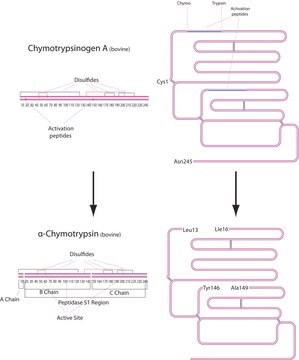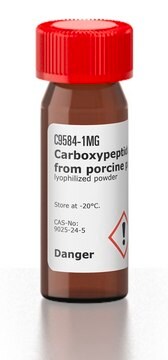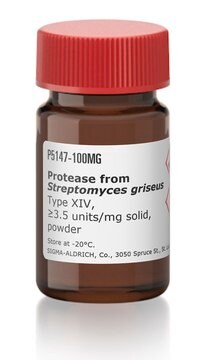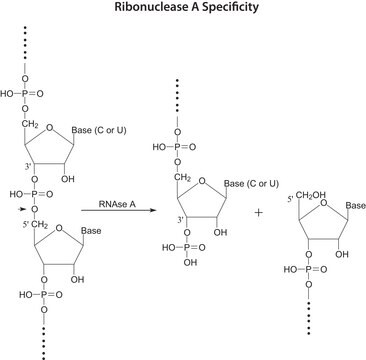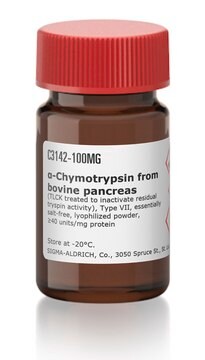C3805
Cyclophilin A human
≥95% (SDS-PAGE), recombinant, expressed in E. coli, buffered aqueous solution
Sinónimos:
CyP
About This Item
Productos recomendados
biological source
human
Quality Level
recombinant
expressed in E. coli
assay
≥95% (SDS-PAGE)
form
buffered aqueous solution
mol wt
20 kDa
concentration
≥0.3 mg/mL
technique(s)
cell culture | mammalian: suitable
UniProt accession no.
storage temp.
−20°C
Gene Information
human ... PPIA(5478)
General description
Application
Biochem/physiol Actions
Physical form
Storage Class
10 - Combustible liquids
wgk_germany
WGK 1
flash_point_f
Not applicable
flash_point_c
Not applicable
ppe
Eyeshields, Gloves, multi-purpose combination respirator cartridge (US)
Certificados de análisis (COA)
Busque Certificados de análisis (COA) introduciendo el número de lote del producto. Los números de lote se encuentran en la etiqueta del producto después de las palabras «Lot» o «Batch»
¿Ya tiene este producto?
Encuentre la documentación para los productos que ha comprado recientemente en la Biblioteca de documentos.
Nuestro equipo de científicos tiene experiencia en todas las áreas de investigación: Ciencias de la vida, Ciencia de los materiales, Síntesis química, Cromatografía, Analítica y muchas otras.
Póngase en contacto con el Servicio técnico